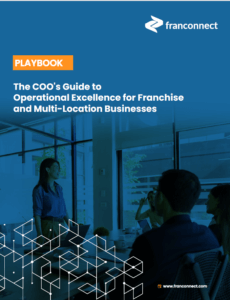One only needs to drive in their communities and notice all the “Now Hiring” signs to get a sense of how pervasive the problem of finding employees is regardless of the industry.
Today, there is a serious shortage of workers, and this has resulted in Restaurants and Personal Services businesses modifying their hours (and even their days of operation) to ensure they have enough staff to meet the demand.
If you’re reading this article, you’re probably experiencing a shortage of workers in your own business and are hoping for a silver bullet to help you quickly hire quality employees.
Surveys and research illustrate just how pervasive the labor shortage issue is:
> In March, the National Federation of Independent Business found that 42% of owners had job openings that could not be filled – a record high. 91% of those hiring or trying to hire reported few or no qualified applicants for the positions they were attempting to fill.
> Workstream.us recently surveyed 5,000+ hiring managers in order to understand what aspects of their hiring process have become more difficult due to COVID and unemployment benefits. The results found that the top 3 challenges were:
Sourcing for hourly workers (57%)
Conducting in-person interviews (52%)
Scheduling interviews (48%)
> The NFIB also reported that 42% of all owners reported job openings they couldn’t fill – a record high reading and 20 points above the group’s historical average over the last 48 years of 22%.
> In another major franchise study that occurred just prior to the pandemic, service-based categories were already reporting that 100% of franchise operators felt they could grow sales in their existing territories or geographic markets, however 69% felt that labor was holding them back from realizing this growth. The overall sentiment was that respondents felt they could get 2X to 5X more growth in the next 3-5 years if it were not for the challenges associated with finding the right people.
10 recruiting approaches to help you address the shortage of workers
The lack of labor and challenges that come with it are not going away anytime soon, even with the pending elimination of the enhanced $300 weekly unemployment insurance benefits and stimulus.
Additional reasons vary – potential workers may be unvaccinated, and some working parents continue to face limited childcare options or in-person schooling for their children. Certain workers in the restaurant space may be hesitant to return to the frontline where they feel at risk due to COVID-19.
Franchisors and franchisees face challenges in dealing with labor cost inflation which has been 4.6% per annum. In fact, 60% of business owners have passed these increases on to their customers.
Here are 10 approaches that may help increase the effectiveness of your current recruiting efforts:
-
Use an Applicant Tracking System
According to Mary Thompson, COO of Neighborly Brands, Applicant Tracking Systems (ATS’s) are one of the most effective tools that Neighborly uses across their myriad of residential home services brands.
Their franchisees use them to hire employees across levels. Mary says that without a doubt, their ATS has contributed greatly to their success. For a marginal cost per location per month, their ATS is the central platform for all parts of their franchisees’ recruiting efforts.
With the press of a button, they can send their job openings to 90% or more of all active job seekers. Look at software review websites like Capterra for Applicant Tracking System vendors (link) and focus on those that specialize in the franchise industry.
-
Social media can be a powerful recruiting tool
Lately, many of the larger fast-food brands are targeting Gen Z through apps like TikTok, Instagram and Snapchat. Some are even offering short video applications that allow people to send in applications with just a few clicks.
Consider that Instagram which is trending towards being the number one social media platform with one billion monthly users in 2020, and that 90% of Instagram accounts follow businesses. Yet it is currently one of the least used platforms for recruiters and hiring managers with only 13% saying they consider it a source for recruiting, compared to 87% who regularly use LinkedIn. It is clearly a space with untapped potential.
Similarly, 68% of Americans have Facebook accounts, and more than a third of their ad audience is under the age of 25. Facebook allows very granular ad targeting, including based on age ranges.
-
Consider added bonuses and perks
Some in the franchise food service industries are offering perks like sign-on bonuses or even payments in exchange for applications. We have heard from McDonald’s franchisees offering $50 payments for the completion of an application.
However, even the Franchisees that have implemented these programs report that referral programs, signing bonuses, and allowing candidates to apply via text message works better.
-
Safe hiring events
Many brands have announced hiring events such as at Yum Brands’ Taco Bell, which is renewing its hiring parties across the country. Many have converted parking lots and patios into job fairs to keep applicants safe during the pandemic.
-
Increasing pay rates
If your labor shortages are coming at the expense of revenues, some are advocating increasing the minimum wages they pay to their employees by an extra $2 to $3 per hour.
-
Get employees involved in your recruiting strategy
Studies have shown that workers who are recruited from referrals produce 25% more profit for their employers than new hires who are recruited the old-fashioned way. Offer current employees a referral bonus if they bring in a great candidate.
-
Invest in the applicants you do have
Many candidates have what it takes to be great employees, but not the exact background you are looking for. This means it’s time to get creative with the applicants you do have.
In industries seeking entry-level employees (such as franchising), many companies are offering employment opportunities to younger people with no prior experience. They look beyond their lack of experience and invest in skills and development training that will help them in the position and beyond. This turns into an investment in them which helps to boost retention and recruitment efforts.
-
Be open to flexible hourly work
More than 80% of hourly workers are willing to work multiple jobs to get the hours they need. Flexibility is key and will entice those looking for a sustainable lifestyle.
-
Look outside your traditional methods of recruitment
For example, don’t be scared to let your reps and suppliers know you could really use another team member. They won’t bring you bad people as it’s a reflection on them.
You can also contact the agencies for a “temp to hire”. Consider local agencies and organizations like the Rotary, Chamber of Commerce or other businesses around you. Be sure to let them know you are actively looking to fill positions immediately.
Another option is researching the local education community (universities, high schools, and trade schools) for opportunities to get in front of potential candidates.
-
Always keep your eyes open for talent
From food servers and retail clerks to auto salespeople – if you find someone who seems like a perfect fit, leave your card or get their number. Ask them to meet you for coffee.
Keep in mind that franchisors need to be careful to not be “overly helpful” and potentially cross the line where you open yourself up to becoming liable as a “joint employer’. You can suggest many of these best practices– but be careful to not mandate.
Focusing on internal growth is key
Remember, one of the most important recommendations is to focus on the talent you already have.
Experts know that the companies who win in the long-term are the ones who also invest in their current teams. This not only aids in reducing costly turnover, but also supports recruitment. The investment in your team often takes the form of education and training where you can offer growth through new skills and allowing them to advance their careers.
Would you like to receive a demo of FranConnect? Our platform helps brands grow unit, increase unit revenue, improve unit profitability, and enhance franchisee engagement.





 Ian Walsh
Ian Walsh








